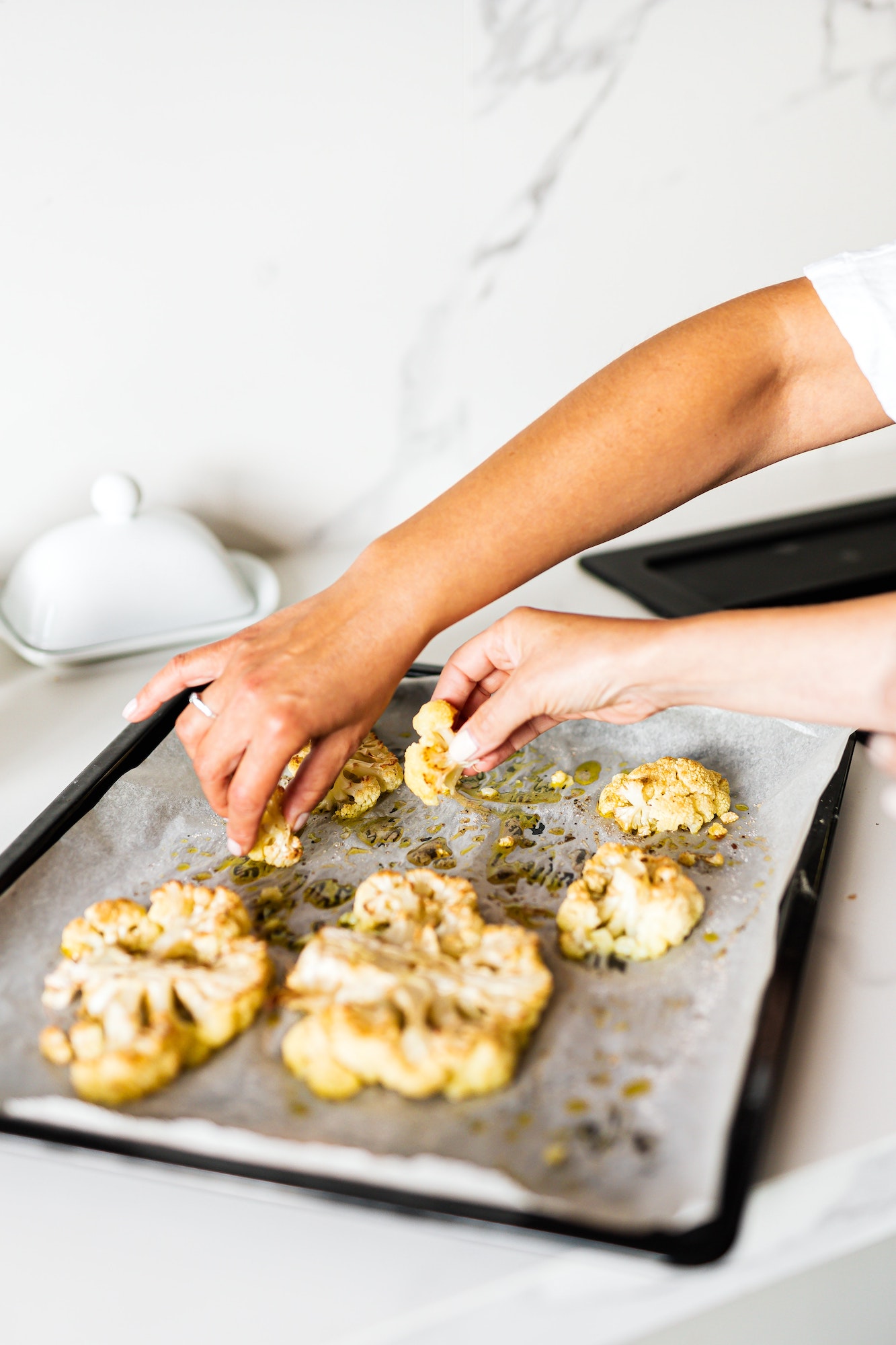In many regards, cauliflower has always held a special place in my heart. Growing up in the south of England, it was one of the most commonly placed vegetables on the dinner table. Surprisingly, growing up in an era where frozen peas and carrots had taken its fair share of space on people’s dining room tables, cauliflower remained a staple.
I have a love-hate relationship with this vegetable and it can only be explained by giving a little hint of my journey to becoming who I am today.
When I was staging in Noma, one of my tasks in the morning was to prepare the outer leaves of the cauliflower, the thick stumps to which the delicate leaves cling to. It became my task to pull away the fine fibers embedded in the stalks. Tedious and strenuous on the eyes and fingers, I cursed from the top of my lungs when a fiber breaks before it reaches its opposite end. I remember thinking to myself that this must be a joke. My peers must had been testing my patience and seeing how long it would take for me, a young twentysomething, to walk out, gasping, cursing, and not looking back.
Ironically, after enduring four hours of painstaking hard work, I was given a glimpse, an orchestrated moment, why I went to such extent of removing the fibers and how romantically beautiful the “scrap” part of a vegetable could make a dish. It was quickly blanched and sautéed in a butter emulsion, seasoned lightly with salt. That made me admire food in a completely different way. I was trumped by a cauliflower. I saw endless possibilities in ingredients that I had never seen before.

Cauliflower is the palest member of the Brassica family, but it is not necessarily the blandest in taste. Cut into large florets, it can be steamed or boiled to use as an accompanying base texture for bolder flavors. However to get the maximum flavor, musky and earthy aroma, roasting is the way to go.
It’s a vegetable that has had its fair share of genetic modification and finding a true heirloom variety these days is somewhat hard in the Philippines. The white head owes its peaceful color to the outer leaves that protect it from the glaring sun.
The head of the cauliflower texture is unique and can easily substitute a carbohydrate, yet the flavor on its own is quite bland so additional flavorings go a long way to make an amazing dish. Using the stalk and leaves adds a surprising amount of texture to a dish. Here is an idea to get you going.
Cauliflower cheese with smoked pancetta
Serves 4
Ingredients
1 medium head cauliflower, cut into florets
2 shallots, minced
1 garlic clove, minced
2 tbsp unsalted butter
1 tbsp olive oil
1/2 cup smoked pancetta, diced
2 sprigs fresh thyme
3/4 cup cream
1/2 cup mozzarella cheese
2 tbsp Grano Padano cheese
2 sprigs flat leaf parsley
salt and pepper to taste
Procedure
- Pour water in saucepot, just enough to cover cauliflower. Bring to a boil and season with a tablespoon of salt.
- Add cauliflower and cook for 4 minutes until tender. Strain, transfer to a clean bowl and reserve some of the cooking water.
- In a separate pan, sauté the shallots and garlic in butter and olive oil until translucent.
- Add the pancetta and thyme and continue to cook for 5 minutes, stirring frequently.
- Add 6 tablespoons reserved salted water to the pan. Reduce heat and add cream and cheeses.
- Add cauliflower and mix well, making sure all the florets are covered in the cream sauce.
- Transfer to an ovenware dish, top with cheese and fresh parsley and cook in the oven until light golden.
- Serve while hot. Serve with your choice of meat or fish.
You can substitute the cauliflower liquid to white wine for a slightly more depth of flavor.
Originally published in F&B Report March-April 2015